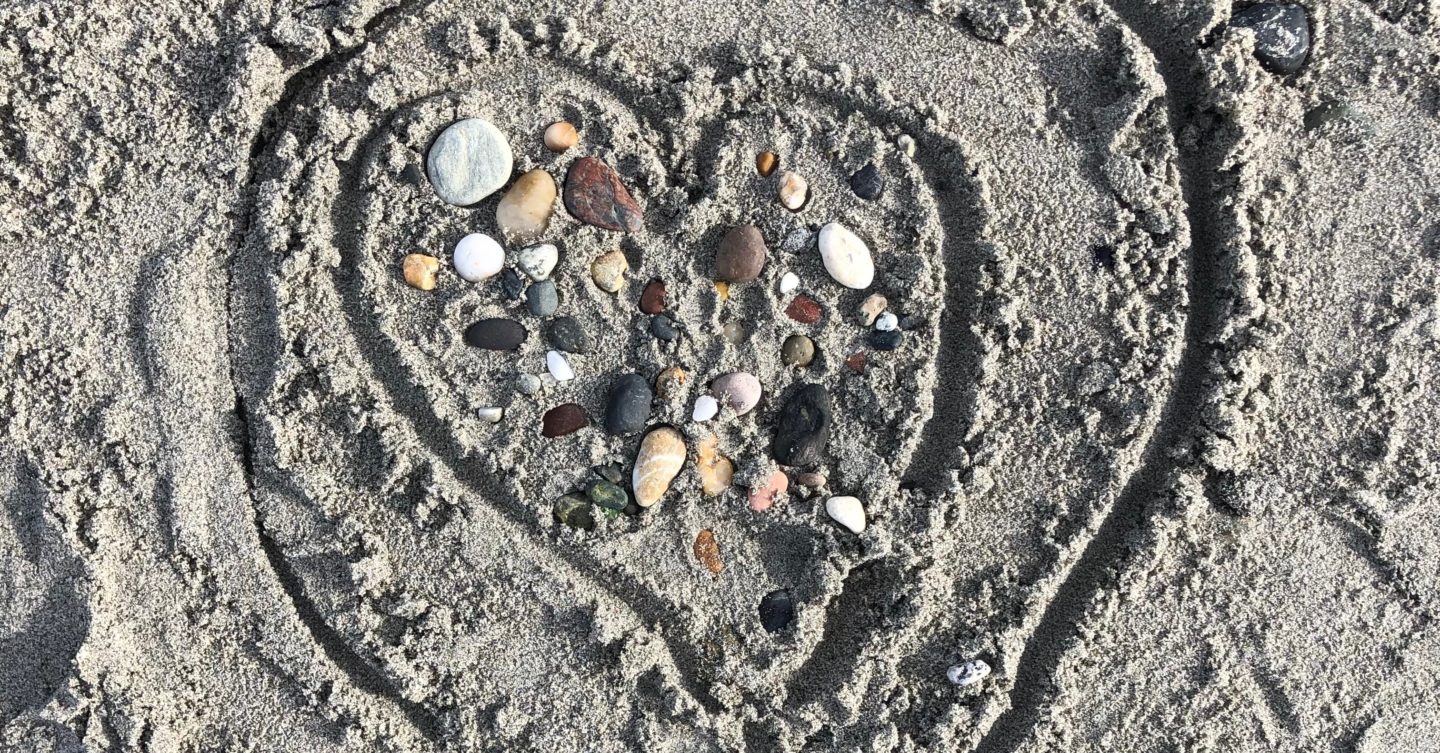
See, Think, Wonder
This first thinking routine us easily translated and easily understood by my young learners (Je vois, je pense, je me demande). When I first introduce « je me demande, » I use the full phrase « je me demande une question » because the terms « question/réponse » are easier to introduce using closed questions. This way I do not have to result to translation in order to make my intent understood. While closed questions will go a long way towards building oral language proficiency, they will do little to help develop the thinking move of wondering.
Let me paint a picture of practice from just the other day. I used the Monday Hearts for Madelene website to get my class inspired before a trip to the beach. We used the See, Think, Wonder (STW) routine to interrogate the heart art images before heading down to the beach to build our own heart art.
My learners are able to easily generate and express their ideas for the « je vois » stem in French. « Je vois les feuilles. » « Je vois beaucoup de petits objets ensemble. » « Je vois les roches et je vois les coquillages. » « Je vois bleu ici et rouge ici. » We have had lots of practice with the supporting vocabulary. To learn more about how I build this vocabulary, check out this post.
For the « je pense » stem, learners shared ideas like « Je pense ça c’est dehors. » « Je pense ça c’est beaucoup de lignes. » « Je pense ça c’est difficile. »
The « je me demande » stem is a little trickier to get off the ground. Here’s how I do it at first:
« Pense… pense… je me demande une question. Pense… pense… je me demande une question. Est-ce que la personne a commencé avec ça autour (pointing to it), ou est-ce que la personne a commencé au milieu (pointing to it)? » Then, I let the question hang for a moment. My learners are usually quick to jump in with their own guesses to respond. I model with a closed question first, because I want to be clear that we are seeking a question right now, not an idea. « Maintenant, dis-moi, qu’est-ce que tu te demandes? Est-ce que tu as une question? » Oftentimes, my learners will respond with phrases like « moi question une personne aider avec ça? » I don’t correct for language errors during this stage of the routine, because it is the most challenging thinking, and I want to encourage the wonderings.
Later, I will add another question to point to more open questions. This time my question was « Je me demandes pourquoi est-ce que la personne a fait tous ces coeurs? » You might be cringing about my question formulation (it’s okay if you are). Despite the fact that this is not how we speak, I am intentionally over-emphasizing the questioning stems in French (est-ce que/je me demandes/pourquoi). I am trying to make it abundantly clear these are all questioning phrases/words. Teaching questioning vocabulary is a job unto itself. More on this here.
We extended on this thinking down at the beach by working in pairs (or independently) to create our own heart art using found objects.

Here’s a simple visual image I created to use when first introducing and teaching this routine. When I first introduce this thinking routine, we follow the three stages together as a whole group. Later in the year, once this routine becomes truly routine, we can combine this with think, pair, share, or even have learners work through these three elements individually. Since I use this thinking routine in many different ways, I find having a visual cue really helps to focus the thinking. I use this image to draw attention to the type of thinking we are doing, but also to focus the learning and thinking. Please feel welcome to download this image for your use in your classroom.
